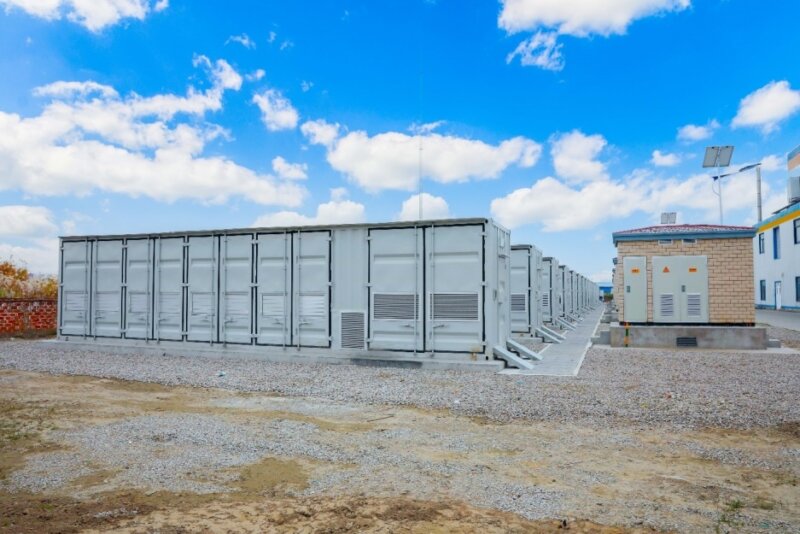In the ever-evolving landscape of energy storage solutions, battery energy storage systems (BESS) have emerged as a crucial player in shaping the future of sustainable energy management. These systems provide a reliable and efficient way to store electrical energy for later use, offering numerous benefits for both residential and industrial applications. In this article, we will delve into the world of BESS, exploring what it is, how it works, its key components, its significance, its different types, and its applications in the industrial sector. Moreover, challenges and solutions in battery energy storage systems will be addressed.
What Is Battery Energy Storage System?
Battery energy storage system, or BESS, is a technology that stores electrical energy in batteries for later use. It acts as a bridge between energy production and consumption, helping balance the electricity grid’s supply-demand equation. Battery energy storage systems are a vital component of the shift towards renewable energy sources, providing a means to store excess energy generated during peak production periods for use during high demand or when renewable sources are unavailable.
How Do Battery Energy Storage Systems Work?
At its core, a BESS works by converting electrical energy into chemical energy and storing it in batteries. During periods of excess energy production, such as when the sun is shining brightly or the wind is blowing strongly, the surplus energy is directed to charge the batteries. When demand exceeds supply or when renewable sources are not actively producing energy, the stored electricity is released from the batteries to meet the required demand.
Key Components of a Battery Energy Storage System

Battery cells: These are the fundamental building blocks of a BESS. Battery cells store electrical energy in chemical form.
Battery management system (BMS): The BMS monitors and manages the health of individual battery cells, ensuring optimal performance, preventing overcharging or discharging, and enhancing the overall lifespan of the battery.
Inverters: Battery energy storage systems use inverters to convert direct current (DC) stored in the batteries into alternating current (AC), which is suitable for use in the electrical grid and various industrial applications.
Control system: The control system oversees the operation of the BESS, managing the charging and discharging processes based on demand, grid conditions, and other parameters.
The Significance of Battery Energy Storage Systems
The significance of BESS lies in its ability to address the intermittency and variability associated with renewable energy sources. By storing excess energy during periods of abundance, BESS ensures a stable and consistent power supply, mitigating the challenges posed by unpredictable renewable energy generation.
Furthermore, BESS plays a vital role in enhancing grid stability, providing backup power during outages, and contributing to the overall efficiency and reliability of the electrical grid.
Types of Battery Energy Storage Systems
Distributed BESS: These systems are deployed at the point of energy consumption, often integrated with solar panels or wind turbines in residential or commercial settings.
Utility-scale BESS: Larger installations connected to the electrical grid, serving entire communities or regions. These systems contribute to grid stability and can provide ancillary services to the utility.
Mobile BESS: Portable battery systems can be deployed for temporary power needs, disaster relief, or in remote locations where a reliable power source is required.
Applications of Battery Energy Storage Systems in the Industrial Sector
The industrial sector is increasingly adopting BESS to enhance energy efficiency and reliability. Some key applications include:
Peak shaving: Battery energy storage system helps industries manage peak demand by storing excess energy during low-demand periods and releasing it during high-demand periods, reducing overall electricity costs.
Load balancing: Battery energy storage systems assist in maintaining a stable and balanced load on the electrical grid, preventing disruptions, and ensuring a consistent power supply.
Backup power: In critical industrial processes where downtime is not an option, BESS provides reliable backup power, safeguarding against power outages and ensuring continuous operation.
Grid support: Battery energy storage systems contribute to grid stability by providing frequency regulation, voltage support, and other ancillary services, enhancing the overall reliability of the electrical grid.
Challenges and Solutions in Battery Energy Storage Systems
Although battery energy storage systems represent a revolutionary approach to energy management, they are not without their challenges.
One primary challenge facing battery energy storage systems is the cost associated with their acquisition and installation. While the price of battery technologies has been decreasing, upfront costs remain a barrier, particularly for large-scale utility deployments. The solution lies in ongoing advancements and economies of scale, coupled with supportive government policies and incentives. As these factors converge, the cost of battery energy storage systems is expected to decrease, making them more accessible and economically viable.
Another critical consideration is the limited lifespan and degradation of batteries over time. Batteries undergo wear and tear through charging and discharging cycles, impacting their overall performance. To counter this, sophisticated battery management systems (BMS) are employed to optimize battery usage.
Safety is a paramount concern when deploying high-energy-density batteries. Thermal runaway, overheating, and fire incidents pose risks that need to be mitigated. Rigorous testing, standardization, and the incorporation of safety features in battery design are crucial solutions. Ongoing research explores new materials and technologies to enhance battery safety, ensuring that BESS can be deployed with confidence.
Technological limitations, such as energy density and charging times, are being addressed through continuous research and innovation. New battery chemistries and materials are explored to overcome these limitations, while hybrid storage solutions offer a balanced approach to meet diverse energy demands.
Conclusion
Battery energy storage systems represent a pivotal advancement in the field of energy storage, offering solutions to the challenges posed by the integration of renewable energy sources into the electrical grid. With their diverse applications and ability to enhance energy efficiency, battery energy storage systems are set to play a central role in shaping the future of sustainable energy management across various industrial sectors. As technology continues to evolve, the widespread adoption of battery energy storage systems holds the promise of a more resilient, flexible, and sustainable energy future.

